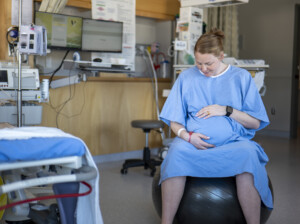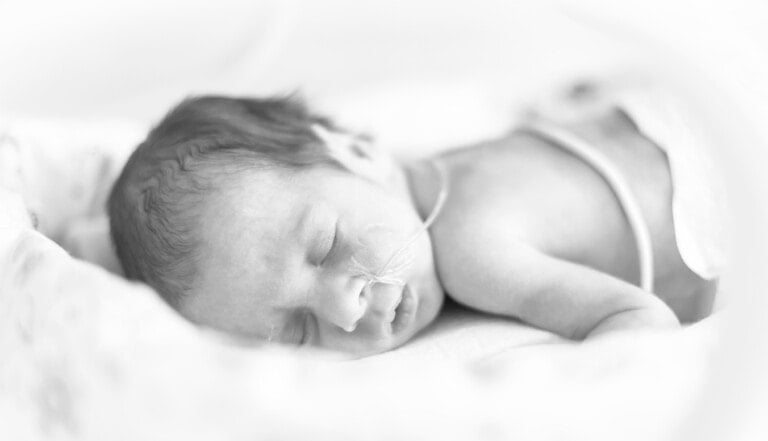There is no “right” way to have a baby. Whether you have a vaginal birth or Cesarean birth, birth is birth, and all birth is beautiful! Some mamas have a preference regarding how they birth their babies. Some want a vaginal birth, while others want a Cesarean birth. Of course, it’s always recommended to talk with your healthcare provider about these options, what they mean, and how it pertains to your pregnancy.
While you may have a preference, medical situations may supersede them. Your safety and the safety of your baby are what come first. There are some pros and cons to vaginal births and Cesarean births, so let’s discuss what they are.
Vaginal Birth vs. Cesarean Birth
Knowing the facts is essential when discussing whether a vaginal or Cesarean birth suits you. As a labor, delivery, and postpartum nurse, I have seen probably thousands of births, and they’re all beautiful. However, there are some critical differences between them.
Cesarean Birth (C-Section)
In 2021, the CDC came out with birth data that found the Cesarean birth rate in the United States increased to 32.1%.1 Some Cesarean births are planned, some are unplanned, and others are emergencies. Here are some pros to having a Cesarean birth:
Pros of C-Section
If it is a planned C-section, one perk is knowing the day and time you’ll get to meet your precious baby. This allows for proper planning to have the best experience and can be much more predictable than labor and vaginal birth.
For mamas with severe anxiety, having a planned Cesarean birth can change how you experience your delivery. It may give you a sense of control when we don’t have much, which can be super helpful for some. In an unplanned Cesarean, having a life-saving procedure can ensure that mom and baby are healthy and safe.8
Women who have a Cesarean birth may also be less likely to experience stress urinary incontinence after delivery and suffer from vaginal tears and hemorrhoids.2
Lastly, Cesarean birth decreases the baby’s chances of birth injuries, such as asphyxia (oxygen deprivation), shoulder dystocia, and fractures.7
Cons of C-Section
There are, however, cons that come with having a Cesarean birth. There’s often a lack of acknowledgment that Cesarean birth is major abdominal surgery. With that comes an increase in the risk of postpartum complications. These complications range from physical symptoms (such as increased bleeding and pain, surgical infections, and blood clots) to emotional health symptoms (such as increased postpartum depression and bonding interference due to less frequent direct contact with the baby after delivery).3
After a Cesarean birth, your hospital stay may be a bit longer than a vaginal birth. This is because your healthcare providers will want to monitor you more closely and ensure your recovery is headed in the right direction. They also want to ensure you feel confident caring for yourself and your baby before going home. After a Cesarean birth, doctors recommend not lifting anything heavier than your baby, which can be challenging for moms caring for other children at home.9
I also like to mention that once there is an incision in the uterus, it can affect subsequent pregnancies and births.8 However, this doesn’t mean that a VBAC (vaginal birth after cesarean) isn’t an option down the road. Once again, discuss your options with your healthcare provider, and they can give you personalized information.
Vaginal Birth
Approximately 68.3% of deliveries are vaginal births.4 Many women prefer to have a vaginal birth. But, due to medical complications or safety concerns, your baby may be born another route. So, always keep an open mind and remember: nothing will matter once that sweet baby is in your arms!
Pros of Vaginal Birth
The pros of a vaginal birth include fewer postpartum complications and an easier or faster recovery. Your hospital stay may be shorter, which tends to be a significant perk for mamas, especially if you have older children at home. There is also less potential for complications with future pregnancies.10
Additionally, some research shows that breastfeeding success is higher after vaginal birth. This is because having an initial latch within that first hour of life is essential for breast milk production and bonding.5 If you’re hoping to breastfeed, no matter your delivery route, tell your care team so they can coordinate appropriately.
And, as crazy as this sounds, if your baby is born vaginally, they are also exposed to healthy bacteria that can boost your newborn’s immune system.6
Cons of Vaginal Birth
Though statistically safer, vaginal birth can increase your risk of some injuries. These include perineal tears or lacerations, pelvic floor injuries or prolapse, urinary incontinence, and hemorrhoids.12,13
Also, the labor and birth process can be exhausting, affecting how you start your journey into parenthood. Most parents may not sleep much after the labor and birth process. Some can suffer from severe fatigue, which can cause a cascade of events and symptoms.11
Further, there are some situations (a woman has a large baby, small pelvis, or long labor) when the baby may be at an increased risk of birth injuries.14 These can include shoulder dystocia, bone fractures, scalp injuries from vacuum extraction, or oxygen deprivation.6
This information may come as a shock or be frightening, but it is meant to give you the tools you need for your delivery. Being adequately informed helps you advocate for yourself. This enables you to ask the right questions and make comfortable decisions. In a non-emergent situation, don’t be afraid to stand up for yourself and inquire about your options. Educating yourself in the birth process is the first step to empowering yourself through motherhood. This means knowing all the available choices, methods, and techniques.












